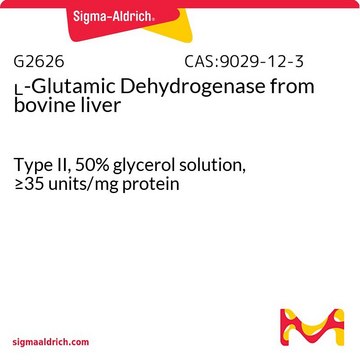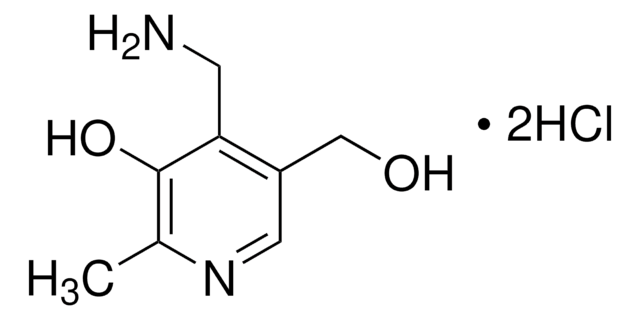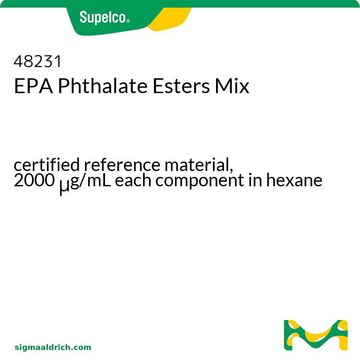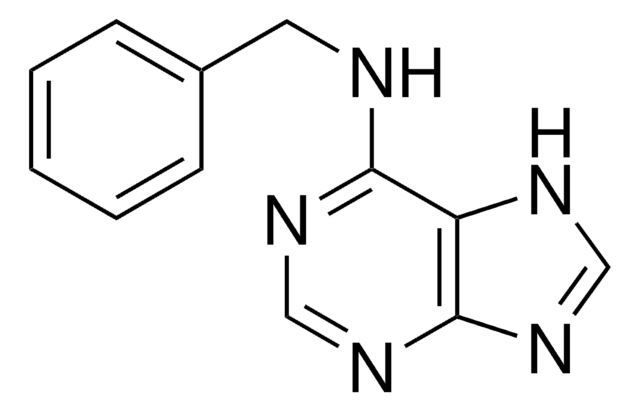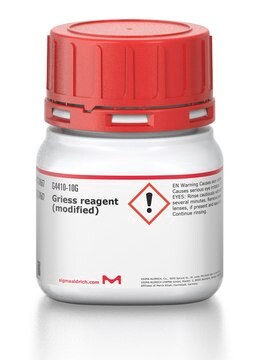P0869
Monoclonal Anti-Peroxisome Proliferator Activated Receptor α antibody produced in mouse
~1 mg/mL, clone 3B6/PPAR, purified immunoglobulin, buffered aqueous solution
Synonym(s):
Anti-PPARα
Sign Into View Organizational & Contract Pricing
All Photos(1)
About This Item
Recommended Products
biological source
mouse
Quality Level
conjugate
unconjugated
antibody form
purified immunoglobulin
antibody product type
primary antibodies
clone
3B6/PPAR, monoclonal
form
buffered aqueous solution
species reactivity
mouse, rat, human
concentration
~1 mg/mL
technique(s)
western blot: 2-5 μg/mL using human, mouse and rat
isotype
IgG2b
UniProt accession no.
shipped in
wet ice
storage temp.
−20°C
target post-translational modification
unmodified
Gene Information
human ... PPARA(5465)
mouse ... Ppara(19013)
rat ... Ppara(25747)
General description
Peroxisome proliferator-activated receptors (PPARs) are a group of closely related nuclear receptors. Three PPAR isotypes have been identified: α,β (also called NUC1) and γ. PPARa mRNA is expressed most in brown adipose tissue, heart, liver and kidney in rats. The gene encoding PPARα is localized on human chromosome 22q12-q13.1 and rat chromosome 7q34.
Immunogen
purified recombinant PPARα protein.
Biochem/physiol Actions
Peroxisome proliferator-activated receptors (PPARs) may be involved in chronic diseases such as diabetes, obesity, atherosclerosis and cancer. PPARα has a protective function in fatty acids overload associated tubular injury. The enzyme also has a role in fatty acid oxidation and metabolism.
Physical form
Solution in phosphate buffered saline containing 1 mg/ml bovine serum albumin and 0.05% sodium azide.
Disclaimer
Unless otherwise stated in our catalog or other company documentation accompanying the product(s), our products are intended for research use only and are not to be used for any other purpose, which includes but is not limited to, unauthorized commercial uses, in vitro diagnostic uses, ex vivo or in vivo therapeutic uses or any type of consumption or application to humans or animals.
Not finding the right product?
Try our Product Selector Tool.
Storage Class Code
10 - Combustible liquids
WGK
WGK 3
Flash Point(F)
Not applicable
Flash Point(C)
Not applicable
Choose from one of the most recent versions:
Already Own This Product?
Find documentation for the products that you have recently purchased in the Document Library.
Fenofibrate, a PPAR? agonist, protect proximal tubular cells from albumin-bound fatty acids induced apoptosis via the activation of NF-kB
Nan Zuo
International Journal of Clinical and Experimental Pathology, 8(9), 10653?10661-10653?10661 (2015)
C W Park et al.
Kidney international, 69(9), 1511-1517 (2006-05-05)
Peroxisome proliferator-activated receptor alpha (PPARalpha) is a member of the ligand-activated nuclear receptor superfamily, and plays an important role in lipid metabolism and glucose homeostasis. The purpose of this study is to determine whether the activation of PPARalpha by fenofbrate
Roles of PPARs in health and disease.
Kersten S
Nature, 405(6785), 421-424 (2000)
PPARs: molecular targets in the pharmacogenomics era
Prague Medical Report, 223-236 (2004)
Peroxisome Proliferator-Activated Receptors: Nuclear Control of Metabolism*
Be?atrice Desvergne and Walter Wahli
Endocrine Reviews, 20(5), 649?688-649?688 (1999)
Our team of scientists has experience in all areas of research including Life Science, Material Science, Chemical Synthesis, Chromatography, Analytical and many others.
Contact Technical Service

